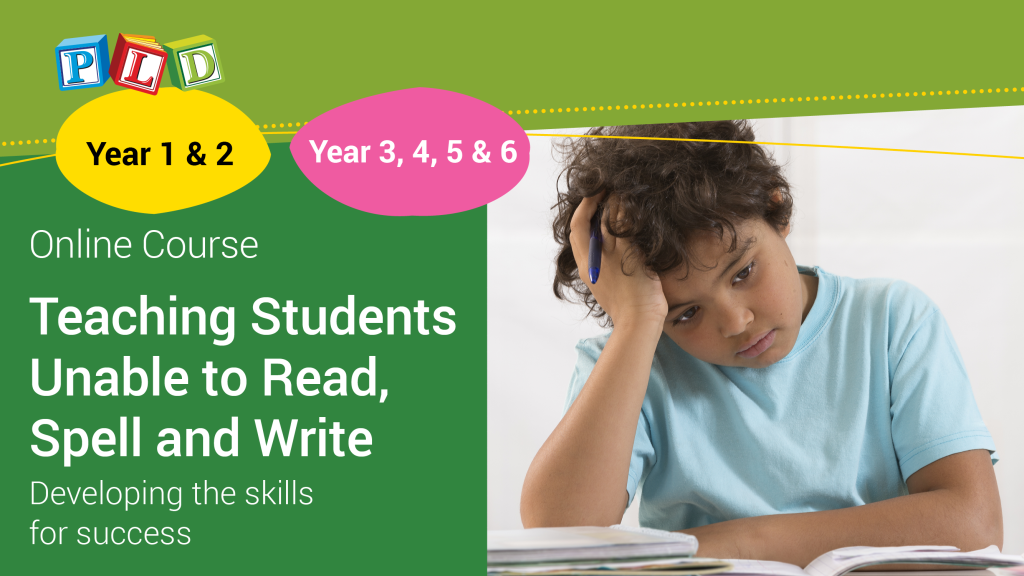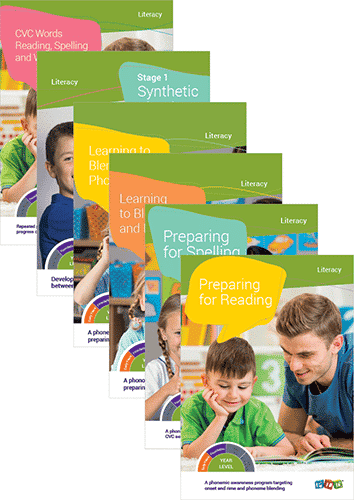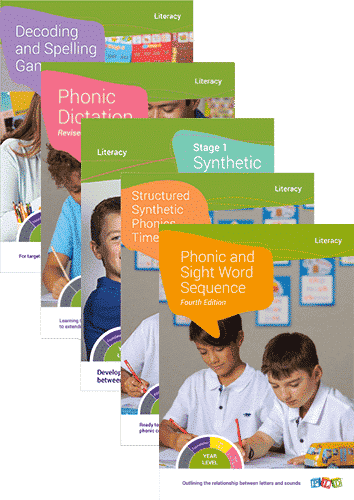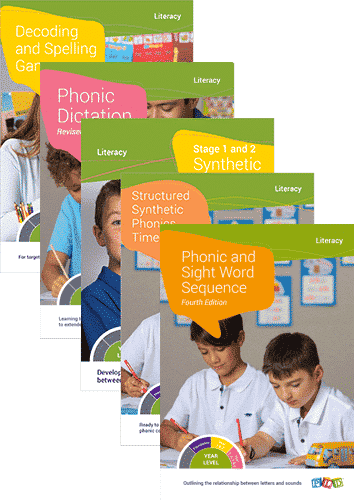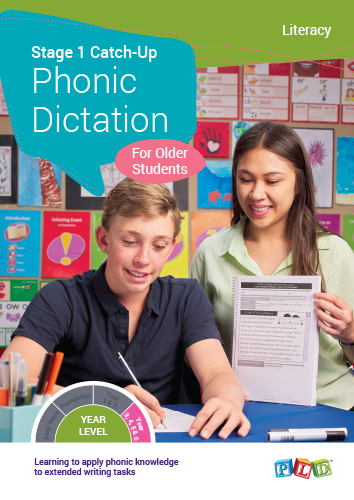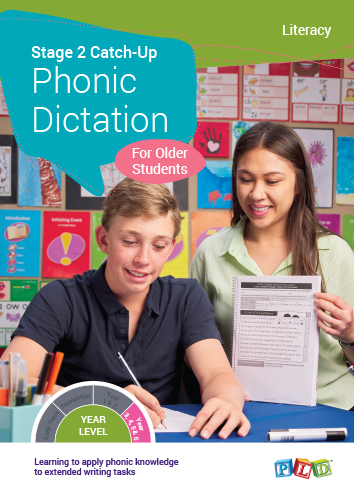Implementing SSP in Secondary School Literacy Support Programs
Supporting Students With Primary School Literacy Levels
Many middle and secondary schools have students who are operating at a primary school literacy level. This can pose a significant challenge for these students when it comes to accessing and engaging with the curriculum at their grade level. Additionally, beyond their years in formal education, their proficiency in literacy will have a profound influence on their social interactions, employment prospects, overall well-being, and self-esteem.
To enhance literacy outcomes for these students, it is recommended to implement Structured Synthetic Phonics (SSP) programs and interventions. Whilst PLD’s range of structured synthetic phonics materials is primarily designed for primary schools, it has also shown success when used in the context of literacy for secondary school students.
Use the tabs below to navigate to the relevant sections:
- It is recommended for schools to employ standardised testing measures, such as assessing spelling age and reading age, to identify students operating at delayed or primary school literacy levels.
- Whilst PLD does not offer standardised testing materials, it is recommended that schools reach out to ACER (Australian Council for Educational Research) for this purpose.
PLD recommends that teaching and support staff focus on the online courses that are most relevant to the specific year level/s of their students, rather than completing the entire suite. A minimum of 2.5 hours should be dedicated to viewing these courses, and they can be revisited for a period of 90 days.
- For secondary literacy support classes, it is advised to start with ‘Implementing SSP in Year 3, 4, 5 & 6’ which comprehensively covers PLD’s Stages 1 – 6. Alternatively, if more appropriate, ‘Implementing SSP in Year 1 & 2’ is a focused course primarily covering PLD’s stages 1, 2, and 3.
- However, if the classes also include students scoring between 0 – 20% on CVC (Consonant-Vowel_Consonant) words in reading and spelling, the recommended course is ‘Teaching Students Who Are Unable to Read. Spell & Write’
To enhance functional literacy skills, it is essential to identify areas of difficulty and build skills from there. The PLD Reading and Spelling Placement Tests are instrumental in determining the specific stages at which students are operating. For middle and secondary support classes, it is recommended to refer to the placement test outlined in the Year 3, 4, 5 & 6 Manuals.
Here’s where you can locate the tests:
- The spelling placement tests (covering PLD’s stages 1 – 6) can be found on pages 19-16.
- The reading placement tests (encompassing PLD’s stages 1 – 6 and identifying students in need of decodable reading material) are detailed on pages 23-26.
- If students are operating at a pre-literacy (or pre-CVC) level, consult the subsets highlighted in the red box on pages 27-29.
These placement tests play a crucial role in identifying the PLD stages of operation and informing the selection of required starter packs.
To register for the PLD Tracking Sheets, please click on the link provided.
- Follow the instructions to create a separate tab for each literacy support class. For students with more complex needs, individual profiling sheets are also available as an option.
- As mentioned in the screening step above, teachers will need to input the test results for each student into the PLD Tracking Sheets.
- It is typically recommended by PLD to establish three targeted teaching groups based on the test results. It is crucial for teaching staff to follow up the entry of test scores by watching the relevant PLD tracking sheet videos.
- Once completed, these tracking sheets can then be shared with the PLD office for support and guidance.
To obtain a quote, secondary support classes should either provide an estimate of the functional literacy levels within their classes or administer the placement tests outlined above.
In cases where secondary classes require materials for students who are not yet proficient in reading spelling, and writing (i.e. Pre-Stage 1), these resources can also be included in the quote.
For schools new to PLD, by filling out the form below, you can request cost estimates for training and essential programs. Subsequently, a quote will be sent to the provided email address (typically within 48 hours). Following this, a complimentary 30-minute consultation will be scheduled to further discuss and tailor the quote to meet the specific requirements of the school.





